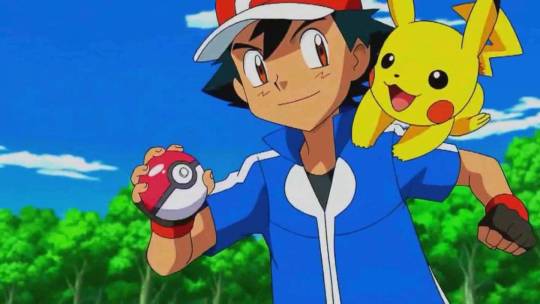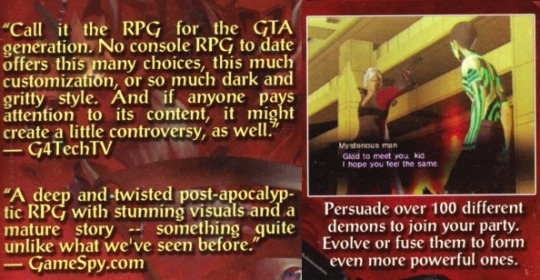#well smt is like pkmn but demons
Text
ive been thinking about an smt au for bedman or like a world based on smt with all the demon summoning and having a comp... maybe bedman made a special version for himself hmm. or he's like stephen and thats how he got his powers... he can fight with his own powers but reserves it for those who are worthy to fight him. he mostly lets his demons fight for him, mainly the oneiroi with it's leader morpheus who he's closest to.
i was thinking morpheus is the kind of demon that takes on the form of its summoners as to reflect them but still look different. in this morpheus is color 20 bedman definitely but ofc his true form is different. or maybe he has no form at all. only romeo and morpheus' brothers know ahaha he changes form when he fights based on what his opponent is weak to
edit: also because of romeo becoming a multidimensional being he achieved transcendence
#bedman brainrot#yes this is another one for 20x1 but it can also be not#so ig in this au color 20 bedman does have a name and identity#his name being morpheus#maybe morphe as a nickname ahaha#bedman just watches or supports him in battle by buffing/healing#or advising him on what to do#what is this pkmn KJHFKSDG#well smt is like pkmn but demons#but yeah youre guaranteed dead if bedman fights himself#you'd be lucky if he stops just because he had enough or found what he needed
16 notes
·
View notes
Photo

I love Leon so much let the NPC talk to me about his interests please.
#the lost child#hayato ibuki#leon danta#lua#I GUESS you can say Lua but yeah that's her arm over there thats it oh well#hayato reminds me of ephraim look at his minty fresh hair :u#but really in his official art hayato really reminds me of eph ahaha...ha... and he's got a magic gun.... hmm....#i never beat the game but leon stole my heart and lua is so rude and constantly drags me away mid sentence like really? REALLY?#LET LEON TALK TO ME he is so into what he's talking about let him be able to have some joy in his life#this man reminds me of myself as a kid where id be super into the topic and then someone else would go 'thats nice be quiet'#:c so i feel strong feelings for leon#its honestly been ages since i even touched this game but i suddenly remembered leon and my love for him#and now i want to go try it again#IT WAS SO COOL ??? like dungeon crawler meets SMT and PKMN#where you capture demons and such like in both but instead of the starter demons going weak and out of date like smt#there is ways to evolve them and keep your precious basic demons by your side and i think thats really cool#obvs you can swap what you want and you dont have to use the basic ones from the tutorial but
31 notes
·
View notes
Note
How is it that the central aspect of the MT franchise is so overlooked compared to Pokemon or Digimon, seemingly both within the fandom and internally at Atlus?
I was talking about this with @joshquixote a bit, who mentioned this relevant quote from Pokemon creator Satoshi Tajiri from November 1999:
http://content.time.com/time/magazine/article/0,9171,2040095,00.html
Tajiri: It’s interesting, because in Japan, everybody goes for Pikachu. In the U.S., the characters Ash [Satoshi in Japan] and Pikachu are grouped together. American kids seem to like that. In America there are more products sold with Ash and Pikachu together, not just Pikachu alone. I think Americans actually understand the concept of Pokemon better than the Japanese. The Japanese focus on Pikachu, but what I think is important is the human aspect–you need Ash.

Basically, because Pokemon was initially just a monster collecting/trading game in Japan, Pikachu was perceived as being an individual PKMN; in the US, we got absolutely blitzed by a marketing bonanza for the series’ launch that heavily included Ash (particularly the anime), so the two were seen as inseparable. You know, in 1999. It’s probably different now, almost 20 years later.
There’s undoubtedly a split in perception between the US and Japan for Shin Megami Tensei’s demons, too. Here are some random thoughts about the topic (including those from a discussion with @sorenblr):
Japanese fans are naturally privy to every MT/SMT novel, game, book, anime, interview, etc. ever released while the English-speaking world has access to a fraction, much of that fraction from fan translations. The average JP SMT fan just has a better understanding of the series’ context and content than their non-JP counterparts. (If you are reading this blog, chances are that you aren’t a casual SMT fan, so this might not apply to you.)
SMT features more Japanese demons than those from any other single region. It doesn’t mean the average Japanese person will know every single one, but they might still claim affinity with them in ways a Western player won’t. Ame no Uzume, Tenaga, and Waira are not household names here. A fair number know Amaterasu, but as a wolf.
Related to that, Japan’s religious systems of Shinto and Buddhism ensure that the average person there will be more familiar with polytheism than our monotheistic culture, including comparisons to Hindu deities imported to Japan through Buddhism; in the West we are most familiar with polytheism through Greek and Norse myths and only the Norse are well-repped in SMT (moreover, the famous names are generally high-level, which many players may never access). A good 75% (honestly, just a number I’m throwing out there) of any given SMT compendium has little significance to the average Western player.
Building off that, monotheism and Euro folklore figure in plenty (25% is still 100+ demons in recent games) and will probably be the most-recognized overall by Western SMT players. Angels, Fallen demons, Jack Frost, fairies, and Alice come to mind for this category.
In a personal example that intersects of all the elements discussed so far, I read so many passionate defenses of Amemiya’s angel designs in SMT4, but I can’t remember a single one about the similarly bizarre looks for SMT4′s Japanese demons like Michizane, Koga Saburo, or Yamato Takeru. The interest or awareness for JP demons just isn’t correspondent among the English-speaking fanbase.
The lack of regularly introduced demons doesn’t help; the lack of new faces may cause the average player’s eyes to gloss over the old. Seeing Patrimpas for the third or fourth time isn’t going to ingratiate him further (or at all) in the hearts of players.
Some demons have become memes, for better or worse. Awareness of YHVH is high, as antagonistic depictions of him are rare; sometimes SMT is called the series “where you kill the Christian God,” which is amusing to me. Then there’s Mara, of whom only a small minority of non-JP SMT players seem to know his actual significance. And like Mara, some demons are able to coast by merely from their appearances alone, esp. “cuties” like Alice, Moh Shuvuu, Jacks, and Decarabia.
Other demons are remembered if they have exceptional utility. Daisoujou is popular in Nocturne not because he’s a mummified monk but for having essentially unlimited healing at a relatively low level, as are the other Fiends for their exceptional resistances. There’s probably disappointment when the same demon isn’t broken from game to game.
Demon mechanics probably don’t agree with a lot of people, either, lending them the effect of negative conditioning. Complaints about demon negotiation and even fusion are common. Even though fusion is easier with manual skill selection, demons still require a level of micromanagement that may be too much for some. Demons are also meant to be expendable in ways that say, Pokemon, aren’t.
Speaking of things that are expendable, expectations of what “monsters” are from other RPG series likely affect attitudes towards SMT’s demons. Plenty of RPG series use names of mythological beings for its disposable mobs, to the point that it’s unusual when they don’t. Worse, SMT doesn’t do a great job of informing people that there may be something more to its demons. Even as a “monster collecting” series, SMT probably come out too late in the US after the likes of Pokemon, Digimon, or Monster Rancher to have much impact with its traditional formula.
Demons/personas will also forever be overshadowed by human characters. This is to be expected as they are the focus of the narrative. People like me who really don’t give a damn about the humans are squarely in the minority.
Finally, and this is likely isn’t as relevant now, but there’s how Atlus USA initially marketed Nocturne. It didn’t get anything near a Pokemon Red/Blue campaign, but it did get this fascinating print ad. Here’s a snippet:

“The RPG for the GTA generation.” “Dark and gritty.” “Controversy.” “Mature.” “Post-apocalyptic.” I mean, it’s all accurate, and then there’s the “over 100 different demons” as a caption for an image of Dante, the Geralt of 2004. Dark, mature armageddon + lots of demons to collect. But really, I’m not implying they made any mistakes here; these are the limits of marketing. Calling it “Religions Battle 200X” and describing it as “a granular exercise in the representation of myth” doesn’t make for enticing ad copy.
This answer was difficult to write; ultimately, the exact reasons why the demons are overlooked are entirely subjective, but I think the common patterns have been identified here. Against all odds, the value of myth in SMT is something the individual player needs to discover for themselves. Look no further than my own example, as when I first played Nocturne in 2004 pre-myth I found it boring, then a year later post-myth it transformed into one of my most engaging game experiences ever.
I think SMT’s biggest fault re:demons is that it doesn’t provide them enough in-game context for the Western audience; they’re plopped into a modern setting and they want to kill you, or they look like Sarutahiko and they want to bland you to death. To get the most out of it, SMT basically requires you have outside knowledge of myth and religion, which is a lot to ask for a general audience. Unfortunately, I don’t see demon awareness improving anytime soon.
61 notes
·
View notes